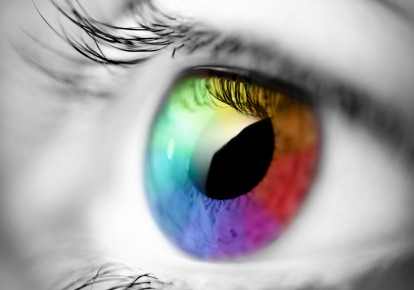 People are affected by colour. For instance, traffic lights tell us to “stop” with red; we associate the colour red with danger (unless you have red-green colour blindness of course). Similarly, we associate green with positive things, action, “go”. Other colours also tell us things; on the Internet blue signals a link, purple signals a visited link. Colour affects what we do.
People are affected by colour. For instance, traffic lights tell us to “stop” with red; we associate the colour red with danger (unless you have red-green colour blindness of course). Similarly, we associate green with positive things, action, “go”. Other colours also tell us things; on the Internet blue signals a link, purple signals a visited link. Colour affects what we do.
Researchers have long debated the real impact of colours – often producing conflicting results. However, new research to be published shortly in the journal, Science, uncovers the reasons behind those different research findings of the past. It shows that colours can have different effects, depending upon the task in hand.
For instance, the researchers from the University of British Columbia’s Business School discovered that the color red reduces distractions when we are having to deal with tasks that require attention to detail. Meanwhile, the colour blue makes us more creative in certain situations.
So what does this all mean for your web site? Well, take shopping carts. These sometimes fail because people put information in the wrong boxes, click on incorrect buttons and generally do not pay enough attention to what they are doing. Making sure that your shopping cart pages appear with a predominantly red background could increase attention to detail, thus reducing the number of shopping cart errors.
Similarly, if you are asking people to contribute to your web site, lots of blues on the page would help creativity.
This suggests that having one colour background for your entire web site is less beneficial than choosing colours appropriate to the mental states you want to help induce. Frequently, businesses want to stick with “brand” colours. But on the Internet this could be working against them at times.
For instance, you can see some pages of corporate sites with poor spelling, or mistakes that ought to have been picked up in the proof-reading stage. However, those corporate sites will be using brand colours throughout their intranets as well, no doubt. Yet, this new study shows that proof-reading is improved when there is a red background.
That would suggest that corporates could improve their online image and reputation with improved spelling and presentation, simply by changing the predominant colors of the intranet pages used for content production. It would reduce error rate by producing what is technically known as an “avoidant motivation” – in other words it helps us focus on the job in hand.
The researchers also had some interesting results for advertisers. When promoting a camera’s technical details, more people in the study were attracted to them when the background was red. But blue led to more people being attracted to the creative side of the camera. This suggests that any advertising needs to change its predominant colours according to the task you want the audience to do – focus on the technical power of your product, or swoon over its creative possibilities.
Sometimes web site owners, corporates and advertisers find that particular colours work – and they have no real idea why. This new research points the way to an explanation. But more importantly for your web site, it points the way to using colours to help produce the results you want.
